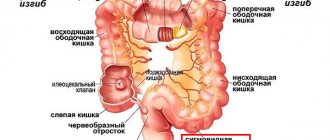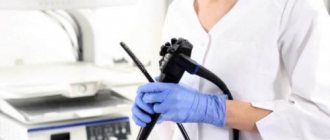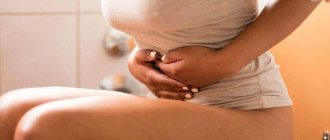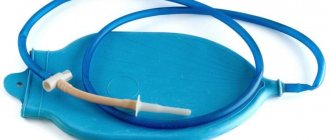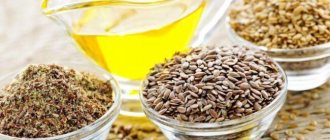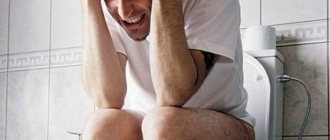Anoscopy of the rectum is one of the ways to determine and identify formations of serious diseases, prevent their development using modern methods of treatment, and process laboratory test materials. Anoscopy is an important area in modern diagnostics. These are not ordinary hard tubes, but new equipment using soft, comfortable materials.
All items are equipped with all kinds of devices that make inspection easier.
Preparing for the examination
Before going to the doctor, you need to clean the rectum with Microlax microenema at intervals of 1 hour.
Carrying out anoscopy for patients does not present any difficulties, especially if people have already suffered from similar diseases and used various enemas in their treatment. This procedure can be done in three positions, as convenient for you:
- lying on your left side with your knees pulled up to your chest;
- lying on your back on a gynecological chair;
- kneeling and leaning on your elbows.
At the beginning of the anoscopy, the specialist wipes the tip of the anoscope with a liquid solution or oil, and inserts the anoscope into the anus and rectum with circular movements.
After the mandrin is pulled out, they will begin to directly examine the surface of the mucous membrane of the intestinal walls. The duration of the entire procedure is about 20 minutes. After the examination, the patient can continue to carry out his daily activities without any restrictions. If, in addition to the examination, tissue is taken for analysis or alloying of polyps, then the procedure time increases.
In this case, the patient must take painkillers of his choice:
- Local anesthetic irrigation. There are several pain receptors located on the surface of the rectum. While tissue is being taken for analysis, pain may occur. Therefore, before starting such a procedure, the area of manipulation is irrigated with an anesthetic.
- Sedation (calming). Very often, patients are very nervous and worried before undergoing examinations or operations. Therefore, they are asked to administer sedatives that calm their nervous system and allow them to relax as much as possible. Under the influence of these drugs, the patient can adequately respond to the doctor’s words, but not feel any discomfort during the operation and it may remain unnoticed by him.
Preparatory stage
In order for the procedure to take place as quickly as possible, it is necessary to understand exactly how to prepare for the examination. The preparatory stage begins with a preliminary initial examination, during which the proctologist fills out a medical card to find out the characteristics of the disease.
This takes into account the duration of the disease, symptoms, and hereditary predisposition. Only after this the specialist issues a referral for anoscopy, and also explains what it is.
In order for the proctologist to properly assess the health of the anus, it will be necessary to clean the ampoule and distal rectum from accumulated feces and mucus. Preparation begins in the evening, when a person copes with natural bowel movements. After it, it is recommended to do a cleansing enema.
For this, two liters of water at room temperature is enough. In this case, the cleaning procedure using an enema should be repeated the next day approximately a couple of hours before the scheduled visit.
Here it is important to take into account the correctness of the cleansing measures, since not all ordinary people know how such an intervention is carried out. If the patient is in an inpatient department of a hospital, or does not have the necessary skills, then it would be safer to seek qualified help from a medical professional.
The reason that can complicate the administration of an enema is often an extensive inflammatory process associated with the formation of hemorrhoids. Even knowing how professionals perform the manipulation will not help here, because with an anal fissure and bleeding it will be too painful to insert an enema cannula.
In this situation, it is more effective to use ready-made pharmaceutical products aimed at releasing feces and mucus naturally. Moreover, it is better to look for suitable pharmacological agents not through a forum or blogs, but to clarify the list of approved medications in advance with the treating expert.
The problem with the victim’s initiative is that some believe that the drugs to improve anoscopy are the same ones that are required for intestinal diagnostics. But they differ significantly in their spectrum of action.
To simplify the diagnostician’s work, you need to start following a certain diet at home a couple of days before the scheduled visit. It involves avoiding foods that cause severe gas formation. Such products include cabbage, fatty meat, fresh bread, apples, kvass, and carbonated drinks. Moreover, on the day of administration, a light meal is allowed.
Does it hurt or not?
As stated above, the procedure can be performed in three positions that are comfortable for the patient: lying on the back with bent knees, kneeling with bent elbows, and lying on the side with bent knees. All anoscopy is carried out under the direct supervision of the patient himself, so as not to cause him any injury or pain; doctors ask questions as they proceed.
If any pain occurs, the patient immediately reports it. There are few pleasant sensations from such a procedure, but there should not be terrible pain either.
It all depends on the doctor’s experience. Such procedures are safe and harmless, but with any action various complications may arise:
- Bowel perforation. This complication occurs when the patient is worried, tense, or resists the procedure.
- With such thoughtless and sometimes sudden movements, the device, being inside the rectum, can perforate its wall.
- Allergy to the constituent components of anesthesia.
- When pieces of tissue are taken for examination or polyps are cauterized, the doctor will ask the patient to breathe deeply. While various actions will be performed in the rectum, the patient should not feel any discomfort or pain because pain receptors do not exist in the intestinal mucosa.
Clinical significance
Although anoscopy appears to be the best procedure for detecting pathologies of the distal anorectal region, such as internal hemorrhoids, proctitis, or ulcers (which cannot be reliably identified or differentiated from each other on digital rectal examination), which may lead patients to complain of bleeding or discomfort, there are significant limitations to this procedure. Although anoscopy is very sensitive for detecting pathology such as internal hemorrhoids, the results obtained with anoscopy do not allow practitioners to exclude a proximal source of gastrointestinal bleeding, which is subsequently detected at endoscopy in 50% of cases. Therefore, finding a potential source of gastrointestinal bleeding, such as internal hemorrhoids, in isolation does not allow the investigator to rule out an additional source of bleeding.
Ultimately, anoscopy is a useful adjunct to screening for anorectal pathology that is inexpensive and can be performed quickly and without preparation. However, this procedure should not be overly relied upon when evaluating a patient with rectal bleeding because the presence of rectal pathology does not exclude a proximal source of bleeding.
How is the examination carried out?
Anoscope
The entire procedure is carried out using an anoscope apparatus. It includes a flat tube, an obturator and a lighting handle, which is equipped with fiber optics.
Due to the fact that the device has an optical device, it is possible to obtain high-quality images and correctly diagnose diseases of a particular organ.
The device contains a recess where instruments are placed to collect histological samples and carry out treatment procedures. They use disposable devices made of plastic and reusable ones made of honey. steels that are sterilized.
Since the device is structured correctly, it does not cause any trauma to the lining of the rectum. After the procedure, patients can immediately go home and go about their daily activities without fear for their well-being.
The patient lies down in a position that is comfortable for him, they are indicated above. The device and the doctor's gloves are lubricated with ointment, oil or liquid. Anesthesia is also used. The doctor examines the anus, tailbone, and sacrum. During this procedure, a specialist examines the condition of the walls of the rectum and anus.
After such a digital examination, the doctor has a better picture of the patient’s anatomical abilities. The device is inserted into the hindgut in a circular motion approximately 10 centimeters. Afterwards, the obturator is removed and manipulation is performed. If you experience discomfort during the procedure or feel pain, you should immediately inform the doctor and he will stop the procedure. This procedure can only examine up to 12 centimeters of the rectum. For a more complete examination, the rectoscopy procedure is used.
Video:
Reviews
When I was being prepared for rectal endoscopy, I was very nervous. But the doctor explained everything correctly and said that the procedure was not scary and quick. Everything went really quickly and I was almost not nervous.
List of references: https://dr-paramonov.ru/news/articles/anoskopiya/ https://medbiospectr.ru/patient/section/razlichiya_mezhdu_anoskopiey_i_rektoromanoskopiey/ https://www.yamed.ru/services/proktologiya/anoskopiya/ https ://www.smclinic.ru/professional-services/diagnostika-v-proktologii/anoskopiya/ https://medongroup-spb.ru/blog/anoskopiya/ https://www.mediccity.ru/directions/208 www. gkb-31.ru/articles/anoskotpiya/ https://www.fdoctor.ru/anoskopiya/ med.vesti.ru/doc/maryana-abritsova/na-osmotre-u-proktologa-chto-takoe-anoskopiya/ Author's notes articles based on personal experience. This material is purely subjective and is not a guide to action. Only a qualified specialist can determine an accurate diagnosis and prescribe treatment.
Last modified: 03/09/2020
Contraindications
Anoscopy is absolutely harmless and has no contraindications. There are several situations that may arise during the procedure, and they are also contraindications:
- Burns of a thermal or chemical nature;
- Pathological narrowing of the anal lumen and rectal diameter;
- Tumor processes of the anus, causing stenosis;
- Inflammatory infectious processes in the acute stage;
- Exacerbation of chronic anal fissure.
With such symptoms, you can carry out such a procedure, but using a certain painkiller, or postpone this procedure for some time until such inflammation passes. The examination is also carried out in critical situations, even if the patient has certain contraindications.
What is anoscopy?
Anoscopy is an inexpensive bedside procedure that can be performed quickly, without bowel preparation or sedation. With this method, the doctor can visualize the internal parts of the anal sphincter and the distal part of the rectum. Prospective studies show that anoscopy has a higher sensitivity for anorectal lesions such as internal hemorrhoids, proctitis, ruptures, fistulas, ulcers and neoplasms than flexible sigmoidoscopy. Up to 50% of rectal bleeding can be mistakenly attributed to hemorrhoids without internal examination to confirm the diagnosis.
Complications during and after the procedure
Complications during rectomanoscopy occur extremely rarely. Their cause is the anatomical features of the intestine or carelessness or carelessness of a specialist, as a result of which the mucous membrane may be slightly injured and begin to bleed. If there is little blood, then after a short time everything goes away without consequences. If you notice traces of blood in your stool for more than a day after the procedure, or the volume of discharge exceeds one or two teaspoons, you should seek medical help. It happens that injury to the intestinal wall does not manifest itself immediately, but after several hours or days. The patient experiences pain in the peritoneum, increased sweating, bleeding from the anus, and chills. Even if you have one of the listed symptoms, you should immediately contact a proctologist.
Complications sometimes occur in people prone to allergic reactions. The body may react to the examination with swelling, rash, and fever. If anesthetics, sedatives or painkillers were used before the procedure, in rare cases chronic cardiac pathologies worsen.
